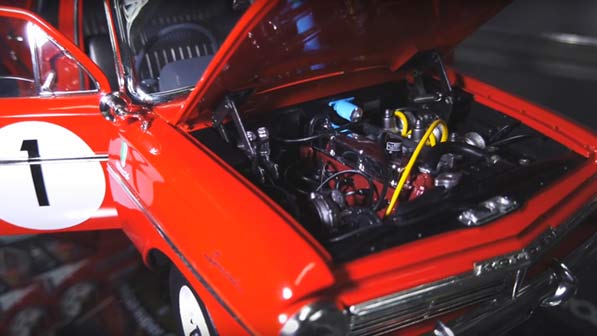We take you on a look through and comparison between Diecast metal models, and Resin Models
Diecast hasn't always been derived from aluminium. As far back as 1838 any kind of die cast (whether it be scale models or production line vehicle components) where made from Tin & Lead, later on in years making the change to Zinc and Aluminium, before becoming fully aluminium based as we know them today.
This change to aluminium helped remove the chances of models being able to possibly crack or quickly degrade (due to the presence of Zinc and any other impurities that may come with it being mixed in with the aluminium).

Which type of model is superior?
In a lot of ways aluminium diecast models can be superior to resin, much as resin can also be superior to die-cast!
But it is not without its drawbacks, one being that due to the nature of metal and the molding process, most of the time incredibly high details or fine detailing points tend to get lost or can't be well translated through. Aluminium ends up being too soft at those points and tends to get rounded off or simplified to get around this problem.
In saying that, this also means that diecast models can also be more articulated as they would have stronger joints/connectors, that could allow for higher levels of movement, more so than resin could offer.
In contrast, resin has the upper-hand on having incredibly fine detailing and a level of sharpness that is hard matched, however this too is a negative in of itself. Meaning that because of the finer details the resin model is more delicate, and therefore most of the time they will not have articulation of any kind (i.e. no opening doors and bonnets etc).

Because diecast metal models are mold injected this means that more of them can also be produced. As such thousands more models can be produced due to the stronger rigid metal mold that is used, thus also keeping the cost of each unit lower. As mentioned above though, this is also why there is a drawback in detailing, due to the rigid nature of the mold that the model is made from.
Comparatively, silicone mold resin usually has to have more time attributed to it (careful overview and quality control), the silicone mold (if not handled correctly) can potentially tear/rip if mis-handled, and this in turn draws up the cost and lowers the output amount of the resin models. In due part to the silicone this is also why resin models have a finer detail, the silicone will allow for smaller gaps, and even underside details as well.

So how do I choose the right type of model for myself?
Our best recommendation is to look at the outset of what you want in general.
Do you want a more sturdy looking model with articulated features like doors and bonnets that open, along with a true metallic finish (Die-Cast)?
Or do you prefer a highly detailed and crisp showcase kind of model which is hand crafted and has a more "true to the original" look (Resin)?
Die Cast Metal and Resin models, both have their pro's and con's so when you are looking at buying a model for you or someone else, make sure you know what you (or they) want to see in that model.

Be sure to follow us online!
|
|
|
|
|
|
|
 is here! Shop now, pay later in 4 easy installments
is here! Shop now, pay later in 4 easy installments

